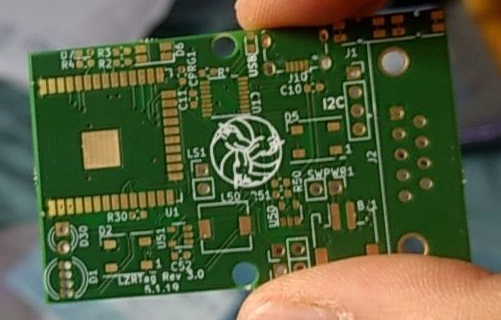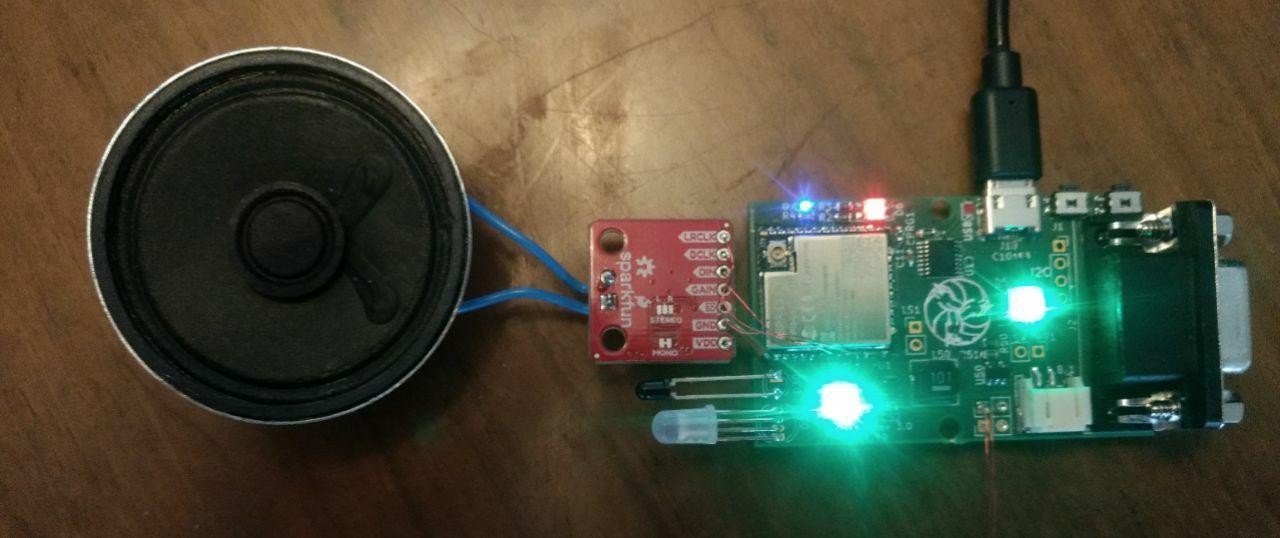So!
My PCB materials finally arrived! A week later than expected, sure (gee thanks Aisler for no explanation), but the PCB's quality is impeccable!
Traces are clean cut, the enig-finish is wonderfully shiny, and I think they even chose a thicker kind of copper than what you get from LCSC.
Just look at that gorgeous chip:

Now, I didn't want to post an update until I had something interesting to show you guys, so I took a few days to solder up and program the chip.
Just as I expected the ESP32 was an absolute pleasure to work with, and apart from a small reversed diode that caused one of the PMBT2222A to blow up, everything worked out really well!
The fully finished piece looks fantastic, and has tons of new features, so I am incredibly happy about it!
The only thing I'd like to change would be the audio amplifier chip. I discovered that the ESP32's DAC can only handle up to 10kHz of updates - after I had ordered the chip. Luckily the MAX98357A, a proper audio I2S DAC with up to 32 bits at 44.1kHz, is available on a breakout for just 5€, so I got one of those and wired it up.
The next revision will obviously have the chip on-board, but for now, it works great!
Have some pics of the current revision:

Just look at those lights in action! This set has a proper connection status indicator (blue), battery charge indicator (red/green dual LED), and four WS2812 spread out over the body to provide lighting inside the casing. Hell yeah <3
And a few quick videos of the audio system in action. It's really impressive what a few cheap but well-chosen components can do!
I'll be working on completing the software for now, and will be ordering a second revision of the PCB with a few fixes, the new audio chip, etc.
I suppose I could also already get started on designing a new casing for this PCB, but that's a secondary concern.
Besides, the huge speaker of this current version will be hard to fit into ... Anywhere :P
The later versions will probably use a 3cm diameter speaker, but I just had this one laying around, and it seems to work fine!
 Xasin
Xasin
Discussions
Become a Hackaday.io Member
Create an account to leave a comment. Already have an account? Log In.